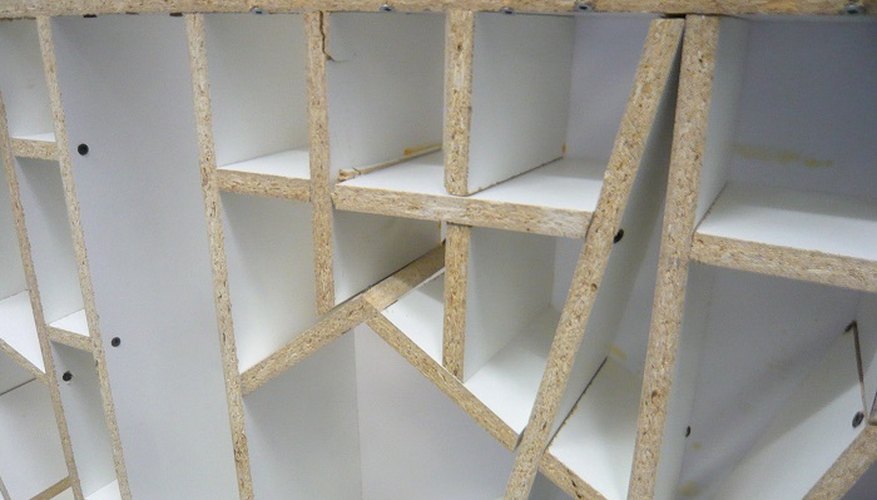Melamine is a furniture material used for a variety of home surfaces. At first glance, a small chip or abrasion can drastically alter the look and appeal of melamine surfaces. Further, if you have melamine that is yellowing due to smoke, pollution or age, your melamine cabinets or other furniture can appear dirty and unappealing. You can salvage melamine cabinets, bookshelves and other melamine surfaces at home, spending a fraction of the cost it would take replacing those items while restoring their aesthetics and durability to factory-finished quality.
- Melamine is a furniture material used for a variety of home surfaces.
- You can salvage melamine cabinets, bookshelves and other melamine surfaces at home, spending a fraction of the cost it would take replacing those items while restoring their aesthetics and durability to factory-finished quality.
Remove all hardware or cover it with masking tape. Knobs, hinges and other hardware can get in the way of repair work, especially those that run along the sides of bookcases and cabinets.
Wash your cabinets one week before doing your repair work. The surface must be thoroughly dry before using repair materials. Wash with mild soap and water and dry with paper towels. Wash again with a TSP (Trisodium Phosphate) solution that removes mould and mildew.
Fill the chipped surface with a wood filler appropriate for melamine. Many brands offer custom colours, so use a colour that closely matches your melamine cabinet. Smooth the surface with medium-grit sandpaper after it dries. Repeat if necessary.
Using a paint gun, apply one coat of oil-based stain-blocking primer. Use low-pressure settings, and wait at least six hours for the primer to dry and harden. Thoroughly wash the paint gun and wipe it dry with paper towels.
- Fill the chipped surface with a wood filler appropriate for melamine.
- Use low-pressure settings, and wait at least six hours for the primer to dry and harden.
Apply premium melamine paint. Keep the paint gun on the low-pressure setting, and hold the unit with both hands, 30 cm (12 inches) away from the cabinet. Start at the top of the cabinet, moving from left to right, working your way down the cabinet.
Apply a polyurethane finish if it is recommended by the manufacturer. Some finishes for melamine paint may yellow the cabinets or ruin the paint job, so read all manufacturer instructions on the melamine paint you use.
TIP
Melamine foam cleans scratches and other minor abrasions on melamine cabinets, bookcases and other furniture for quick fixes.
Use a whitener pen for small marks and chips in melamine surfaces.
WARNING
Use a well-ventilated area for priming and painting, especially when using oil-based primers. Use a respirator mask to protect you from the fumes, and wear goggles when using a spray gun.
Keep pets and children away from your project materials.
